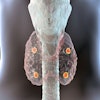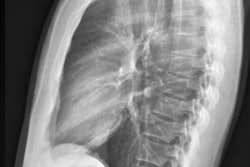
Teledyne Princeton Instruments is touting the work of a multidisciplinary research team in China and the U.S. that has resulted in the design, construction, and characterization of an endoscopic system to perform targeted second near-infrared window (NIR-II) fluorescence imaging of colorectal cancer.
The team used the new NIR-II endoscopy imaging system to evaluate a synthesized fluorescent molecular probe, indocyanine green conjugated bevacizumab, which targets vascular endothelial growth factor, Teledyne said. The study was spearheaded by researchers at the Institute of Molecular Medicine Joint Laboratory for Molecular Medicine at Northeastern University in China.
While endoscopy is the clinical gold standard for examining the interior of a hollow organ or body cavity, the researchers are the first to use NIR-II fluorescence endoscopy for the targeted detection of colorectal cancer, the firm added. The endoscopic imaging system enables the simultaneous acquisition and display of white light and NIR-II fluorescence. It delivers subcellular resolution of 20 µm for sharp images in the NIR-II region (i.e., 900 nm to 1,700 nm).
The researchers' NIR-II endoscopy system provides a generalizable design compatible with most current clinical endoscopies that are equipped with a standard coupling. They anticipate hardware upgrades will promote the application of NIR-II fluorescence imaging in clinical settings.




















